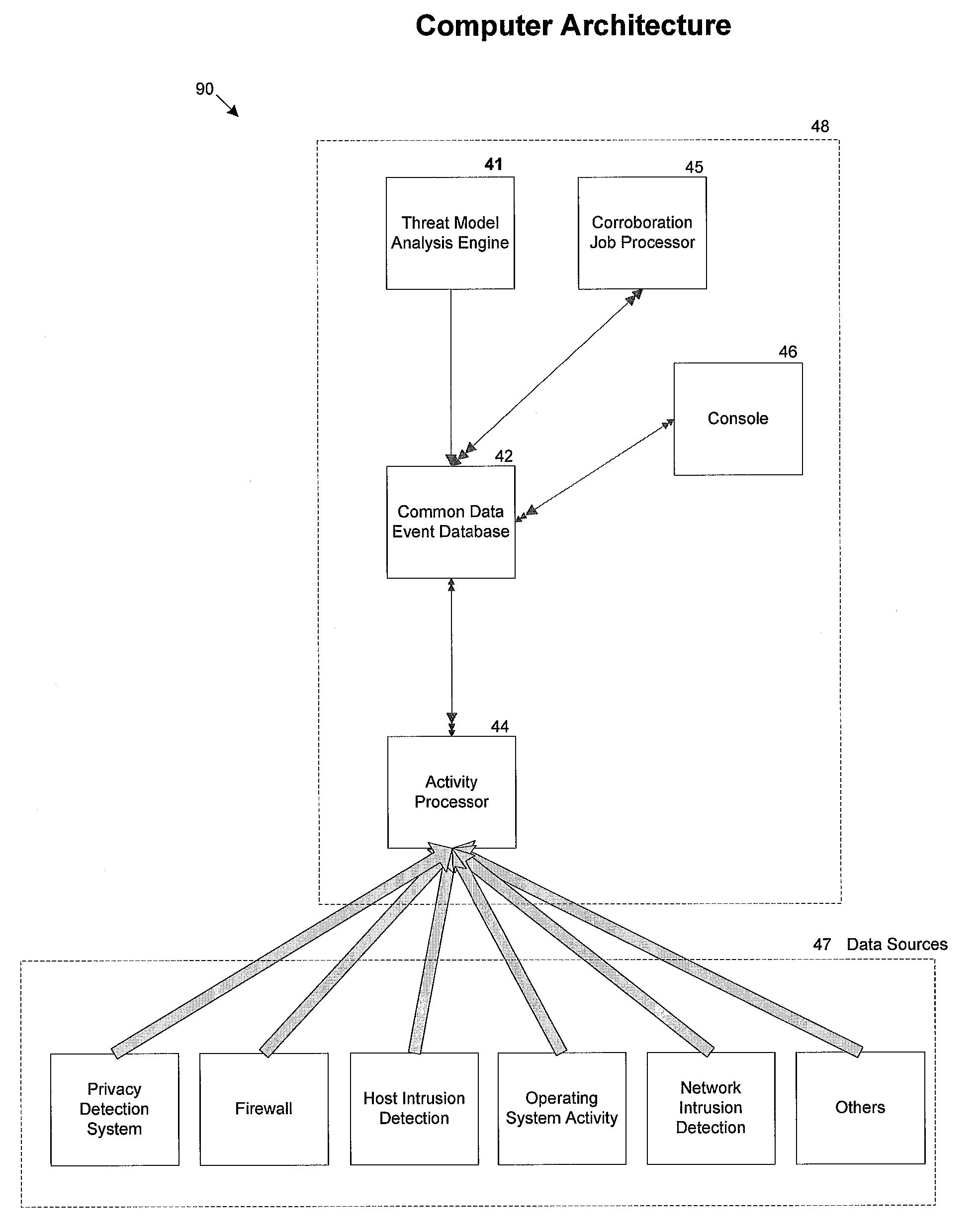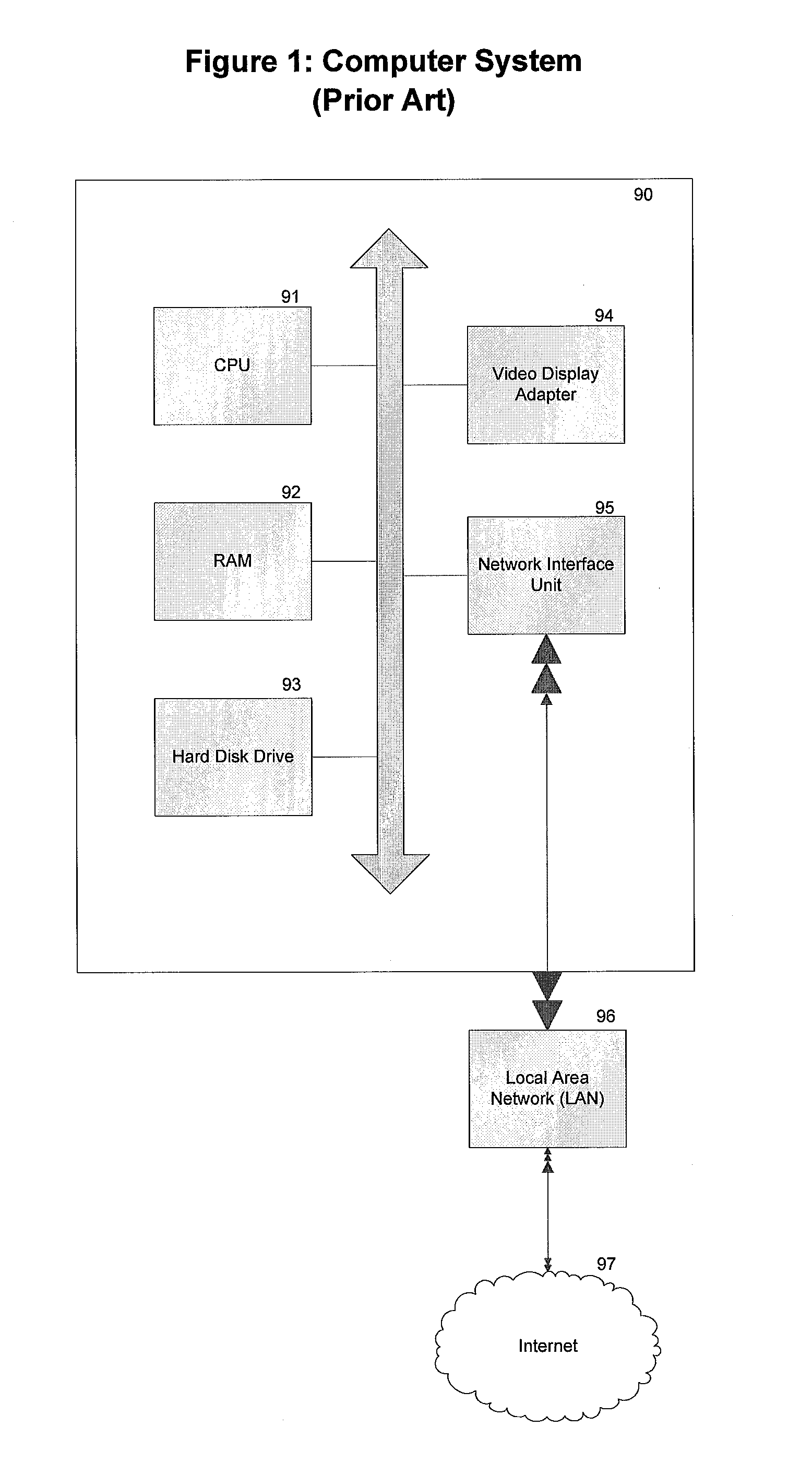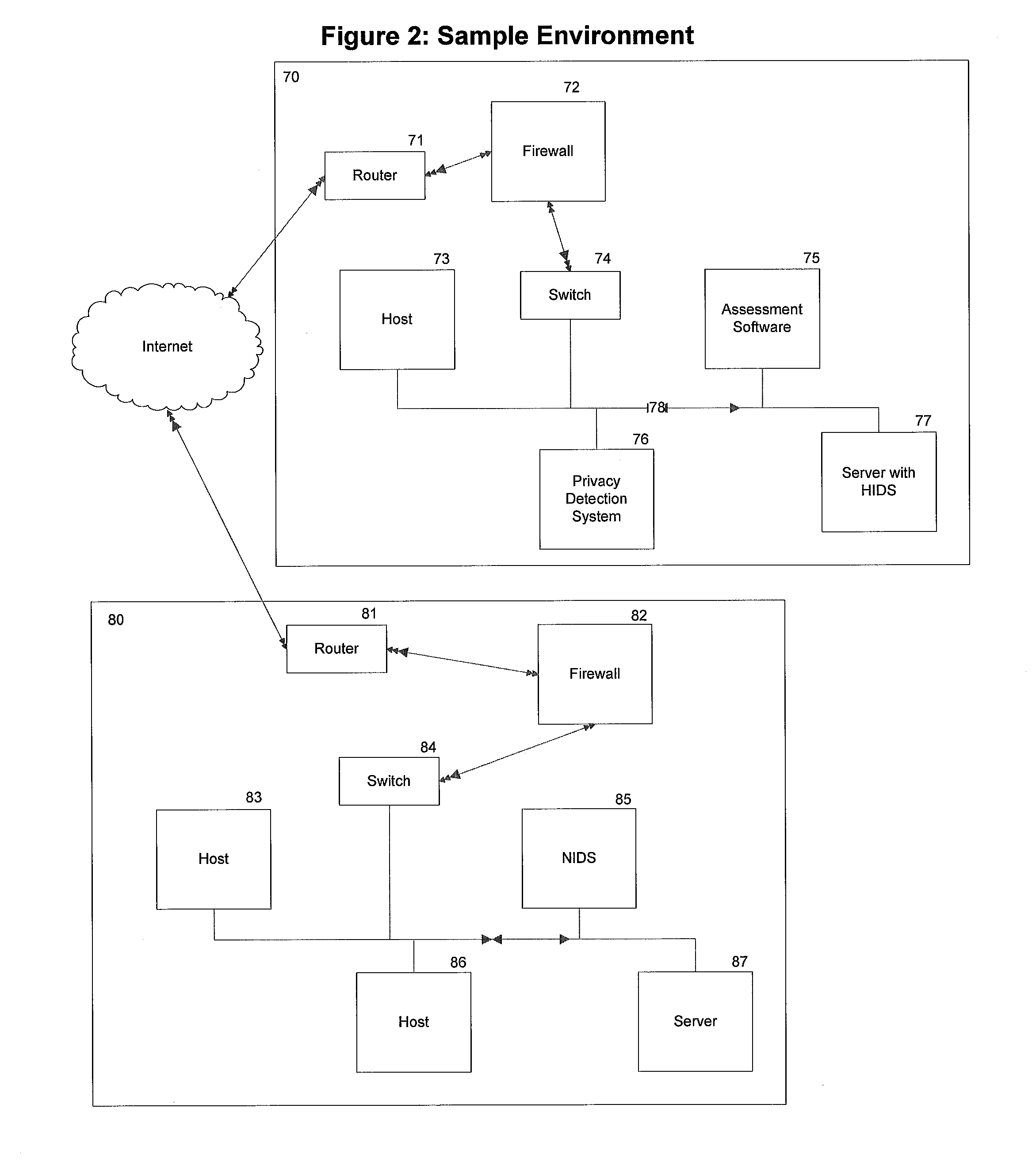Over the history of digital devices being used to both host and automate data assets in both personal and business affairs, there has always been associated risks and threats to such systems and their related assets.
Threats to such systems vary in intention and technique, but often
impact the
confidentiality, integrity, availability, and privacy of such systems or their related assets.
However, each of these types of systems and the devices utilized therein possess both individual and shared problems in being able to derive sufficient decision-making information using only their individual forms of predefined patterns to detect threat activity.
Regardless of the
scenario in which these devices are used, each device is highly limited in capabilities of detecting strategic threats to digital assets by the fact that they often cannot communicate with each other, to take
advantage of each others' locale perspective to more accurately draw
decision making material regarding related threat activity.
This problem is typically due to vendors of such products specializing in different aspects of detection and no common language or storage mechanism being shared across disparate devices.
The lack of communication often causes false negatives (actual threats which were not identified that did come to pass) and false positives (innocuous activity identified as a threat) due to threats being falsely identified both without sufficient information.
Without this, response to such an
attack would lack direction as to which machines may require more immediate attention based on their relationship to other machines and the worm's level of success in compromising them.
The disparity in both detection and the resulting data of each of these devices and their related vendors has caused a lack of analysis capability that can effectively make use of detecting threats that cross each of their related types of resulting information impossible.
Since there are many differences and limited standards concerning the environment, design, and intended use of digital assets to support
user needs, conventional mechanisms for threat event detection often times depend on, and are limited to, threats that can be identified without knowledge of the monitored environment.
Without this knowledge or ability for model definition, conventional sensor and analysis devices are unable to effectively identify many critical threats in data activity.
However, communication between key systems or users of this nature, potentially even limited to specific content, can represent a threat.
Without a framework for custom model definition of threats specific to a given environment in place, many threats to current environments go undetected.
Conventional sensor devices and analysis systems, while sometimes able to detect common predefined events related to proprietary technology activity, do not provide a means for threat models to be identified and detected by those who know and use the technology.
Many digital assets can produce activity related data sufficient to detect ongoing threats, but this data cannot be analyzed optimally because those threats are not part of generally predefined signatures in related security devices or are not used as part of threats predefined in analysis devices.
Some forms of analysis will attempt to identify sequential events in activity, but even this form of analysis often results in a single notification of predefined activity without ongoing support of monitoring of each point in the
threat model.
While some forms of analysis attempt to identify
attack strategies by looking for the existence of specific predefined sequential events, these systems are incapable of following a
threat model that branches to multiple potential following steps at the same time.
This problem increases the inability of monitors to accurately identify threat models and respond to them, producing increased bulk data and lacking pertinent
decision making information as to the progress of an identified threat.
Due to the lack of knowledge about the environment and an overall lack of customization available to users knowledgeable about the environment, including specifically what should be corroborated and how, current corroboration methods and systems are often times inaccurate and insufficient for trustworthy results.
In addition, some methods of corroborating activity are considered invasive and even potentially illegal if performed on digital systems that are outside of the user's ownership, even if those systems are related to detected events.
 Login to view more
Login to view more  Login to view more
Login to view more 


